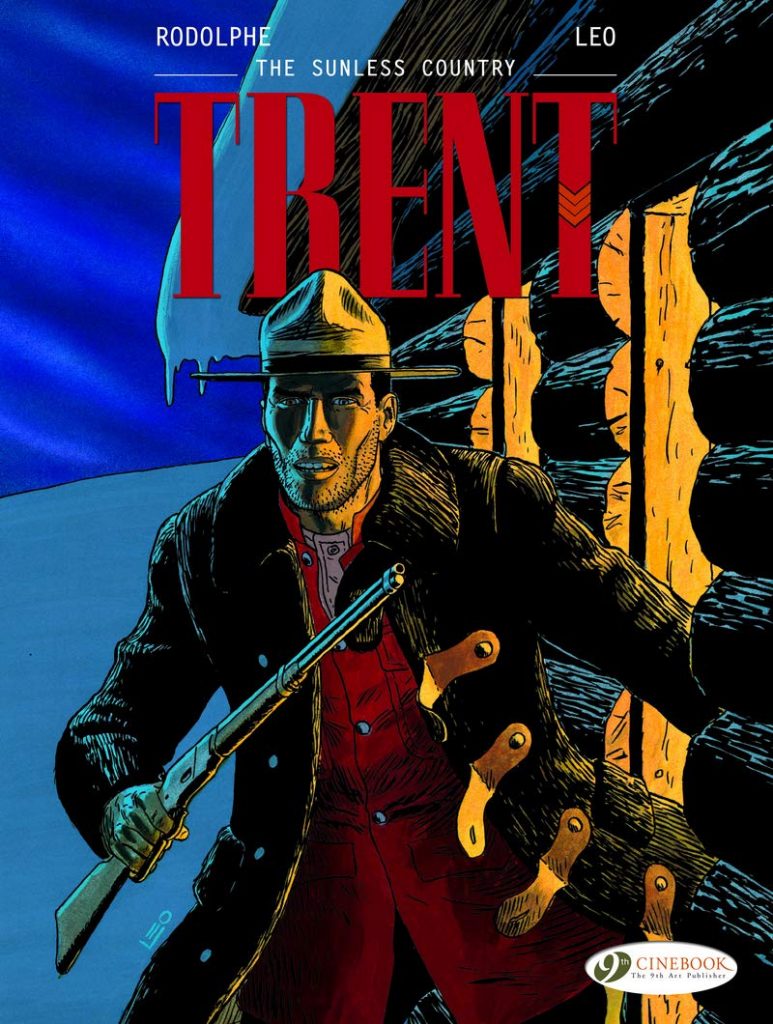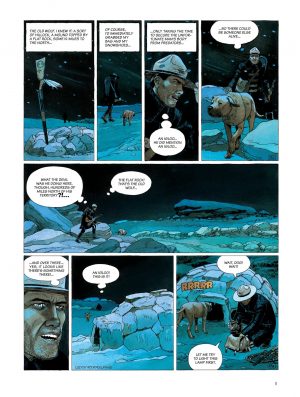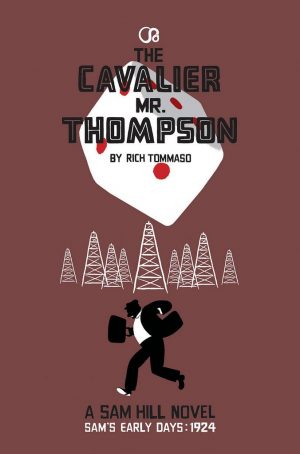Review by Frank Plowright
There’s a timeless quality to many aspects of Trent, one of them being there’s not much difference between the Canadian Arctic wilderness of the late 19th century as depicted by Leo, and the way it is 130 years later. It remains harsh and unforgiving, December and January remain months without daylight, and comforts are few. Just the place, then, for Mountie Philip Trent to lose himself for a while.
We join him with a log hut his protection from the elements, the nearest town several days walk away, and every sound the cause for suspicion and alertness. He has his dog, but more than any other volume so far the location and lack of daylight underline the cultivated melancholy mood.
It’s the mood that defines the series, not the mystery, the brief bouts of violence or Trent’s lawman career. It’s not known how the creative work splits. Maybe writer Rodophe breaks down the art panel by panel sustaining the focus of Trent at home in the wilderness expressing his thoughts, or perhaps artist Leo takes the basic plot and works out the emotional beats himself. Either way it’s an effective synthesis and looks great.
Trent’s thoughts are turning to marriage, and as if on cue he’s supplied with a glimpse into the possible future as he has to take care of a lost baby. More and more Rodolphe is losing the conventions of crime drama, shedding the crime to focus on the drama, and the criminal activity in The Sunless Country is almost an afterthought told in hindsight amid some misunderstandings not cleared up until the final pages. It’s cleverly achieved, without resorting to unbelievable coincidence or artifice. Despite all that, this is a slightly sterile outing when compared to earlier volumes. Read The Sunless Country without reference to those earlier volumes, which is always possible with Trent, and it’ll stand up as superior period drama.





